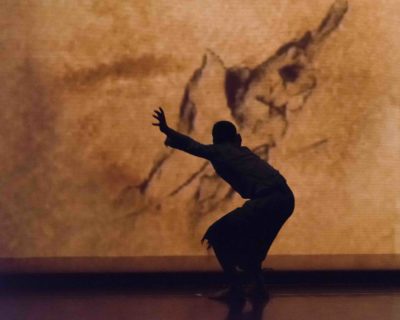INTERVIEW: Battery Dance connects dance with social relevance

Battery Dance recently celebrated its 41st New York season with a two-day program at the Schimmel Center at Pace University in New York City. The company, led by artistic director Jonathan Hollander, premiered four new works, including On Foot, Reconstruction, Double Knot and Echoes of Erbil. Dancers included Robin Cantrell, Mira Cook, Clement Mensah, Bethany Mitchell, Sean Scantlebury, Razvan Stoian and Hussein Smko.
The four premieres dealt with a variety of issues and areas of the world, including the Kurdish region of Iraq, the current political environment in the United States and the difficulty refugees face. For the performances, the company’s members were often paired with guest collaborators from around the world.
Recently, Hollywood Soapbox exchanged emails with Hollander about the company and its New York season. Questions and answers have been slightly edited for style.
What can audience members expect from this week’s program?
Harmony in diversity! Eight choreographers, an Iraqi dancer, music by Syrian and Tunisian composers and the rarity of art being made and projected on the stage by a Syrian artist. We have pulled out all the stops for this, our 41st Season, taking inspiration from our deep engagement with refugees, human migration and the politics of the day.
Why is collaboration so important to Battery Dance?
Right from its beginnings in 1976, Battery Dance embraced the idea that harnessing the talents and engagement of a collective of artists would yield the strongest, most potent results — hence the choice of the company’s name (not only its geographic location at the time but also the concept of a joining of forces — a battery of artists — instead of one more dance company named for its founder). As we approach each new season, we have brought in new talents, outside artists, designers, musicians, dancers and sometimes choreographers, to change the equation and challenge us to attempt ever-new journeys.
Do you believe the importance of these dances from around the world take on a new meaning in today’s political environment?
As I testified before the City Council against the Muslim travel ban, standing with the political and social leaders of our great city against the reductive policies being proposed by the administration, the arts gain from the free flow of ideas and the mutual trust built up among artists across the world. With its unique track record of having worked in 70 countries around the world, who better than Battery Dance to serve as an emblem for the freedom of expression and the connectivity of the world through dance?
How important is the concept of diversity in dance?
Diversity is critical to the health and vibrancy of dance. Things have changed for the better in the four decades since Battery Dance was formed. The mixture of ethnicities and cultures within our small company — not only our dancers but also our management and affiliated artists and even our board and the audiences we serve — speaks to and demonstrates the power and beauty of dance that is fully inclusive.
When did you first fall in love with this art form?
Square dancing and folk dancing at the age of 5 in a rural community center was my first memory of dancing and the feeling of exhilaration that came from it. I started a square dance club in my elementary school and danced in musical theater productions as a teenager but didn’t begin formal dance training until I entered the University of California/Irvine and fell under the magnetic power and brilliance of Eugene Loring and the faculty of dance there.
By John Soltes / Publisher / John@HollywoodSoapbox.com
Battery Dance recently premiered four new works during its annual New York season. Click here for more information.

